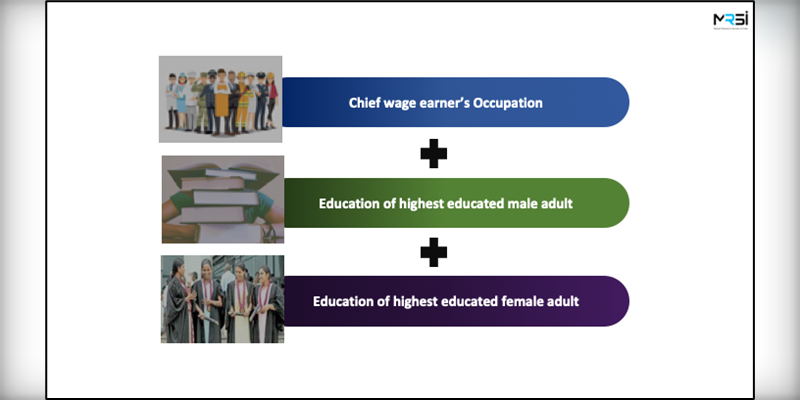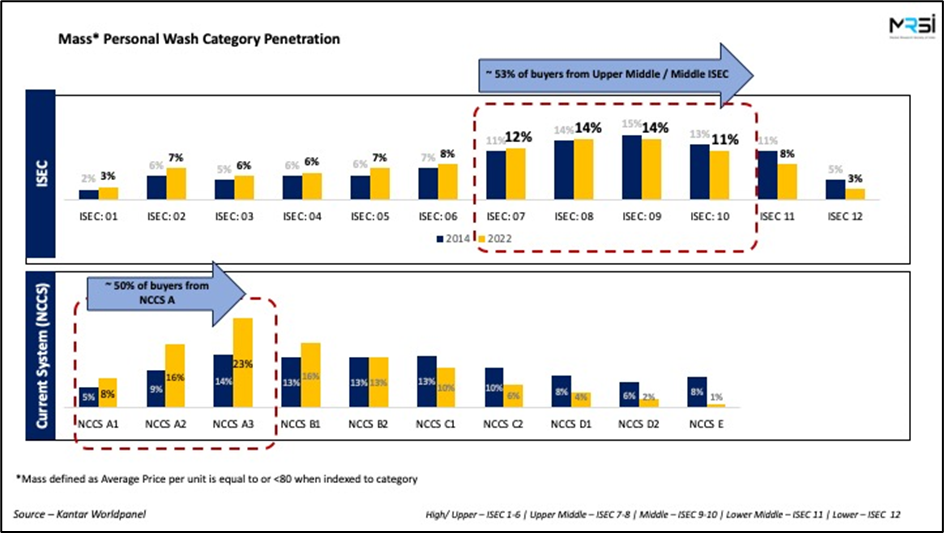
India’s market research industry body Market Research Society of India (MRSI) has adopted and implemented its latest Socio-economic Classification System, ISEC.
The current socio-economic classification (SEC) being followed in India is based on ownership of consumer durables and vehicles. The growth in GDP and income, penetration of consumer durables, and ownership of vehicles has witnessed a significant increase, leading to the current socio-economic classification becoming less discriminatory and more volatile. The need to redefine the key variables led to the formation of a more stable, and more robust construct, ISEC. Among the various industry stakeholders on track to adopt ISEC are The Indian Society of Advertisers (ISA), research users of various organisations such as ITC, Hindustan Unilever Limited, Marico, Dabur India, etc., research agencies including Kantar, IPSOS, as well as key media agencies.
On rolling out the new socio-economic classification system, MRSI director general Mitali Chowhan said, “Socio-economic classification is the base of any targeted consumer understanding. At MRSI we recognise the need for an evolved SEC structure and ISEC is a system that is highly relevant. ISEC was developed by the industry, for the industry and unlike any previous classification system, it considers women’s education as a key definer of social capital, an attribute that is highly pertinent in current day. As an industry body, we are deeply invested in our stakeholders and the launch of ISEC is in line with our commitment to help our industry grow and evolve.”
Socio-economic classification enables brands and agencies to understand their target audience’s behaviour and profiles and set price points. Updates to the current socio-economic classification is critical given the changing landscape of Indian households. ISEC addresses this with classification using household education and occupation profiles.
In line with the roll-out of ISEC, MRSI organised a panel discussion that reaffirmed the importance of an evolved socio-economic classification system to target consumers. Reinforcing their thoughts were senior industry leaders IPSOS India CEO Amit Adarkar, Wavemaker India managing partner Jasmine Sachdeva, Kantar Insights APAC chief operations office Muralidhar Salvateeswaran, Dabur India head of media Rajiv Dubey, India Today Group group CMO Vivek Malhotra, and Dabur India consumer insights head Vinay Virwani. The panel was moderated by MRSI’s general secretary and ITC chief digital marketing officer Shuvadip Banerjee, who discussed the increased need for a deeper understanding of consumer behaviour, media targeting, and challenges the industry is faced with given the existing NCCS construct.

Stressing on the need for a robust SEC system, Adarkar said, “Socio-economic classifications are the starting point of any planning or decision-making, impacting almost all industries. Following a SEC system that is relevant, evolved and representative is hence critical. NCCS was introduced at the time when digitisation was gaining momentum and women representation in household decisions was marginal. Our country has evolved greatly since then and it is essential that we follow a SEC that is equally evolved.”
Concurring with Adarkar, Kantar worldpanel Division South Asia Managing director K Ramakrishnan said, “The challenges that companies are faced with these days are innumerable with the current SEC system adding to these challenges in terms of targeting and understanding behaviours. ISEC is a robust system that works well in both urban and rural India. It has more distinctiveness, a better distribution and it gives us the confidence that its structure will benefit brands and their decisions.”
Unlike NCCS that only factored the education of the chief earner and the presence of certain consumer durable items in the household, MRSI’s ISEC takes on a more advanced approach by including the occupation of chief earner, education of highest educated male adult as well as education of highest educated female adult. Created by a team of seasoned experts and professionals from across the research and insights industry using National Council of Applied Economic Research (NCAER), the Worldpanel division, Kantar, Indian Readership Survey (IRS), and referencing data from VTION, ICUBE, among others.
Raymond Lifestyle – India & International chief executive officer and The Indian Society of Advertisers chairman Sunil Kataria said, “The development and progress of our economy is at a rapid pace. At such a pace it is even more important for us as advertisers and spenders to understand our consumers and their behaviour. ISEC is representative, relevant and robust. It gives us a holistic view of our audience segment and how they are equipped to make decisions. We welcome this new socio-economic classification and will continue to work with MRSI to further strengthen this system as and when required.”
ISEC makes way for improved distribution and sharper and refined targeting. It is considerably more stable than NCCS, hence omitting the need for frequent updates. ISEC’s discriminating quality is visible with each of the class/tier behaving differently, thus being more relevant as the economy develops with improvements in standards of living, increased asset ownership, infrastructure development and government interventions. Moreover, social capital in India can be defined by the education of the female and this parameter helped improve “discrimination.”
IPG Mediabrands India CEO Shashi Sinha added, “A better and deeper understanding of consumer cohorts is always appreciated. It equips brands the opportunity to identify and target consumers in a sharper manner and opens up avenues for sharper communications. ISEC is highly discriminatory which is also crucial in current times. The implementation was long due and we are certain that this will help the industry considerably going forward.”
“Following a socio-economic classification system that is representative of the population ensures that the industry is marching forward with efficiency. It ensures that the money spent is being spent correctly and more effectively. ISEC gives us that confidence and we are certain that this is a step forward in the direction of economic growth and development,” added Malhotra.
Representative of India’s social-economic strata, ISEC works equally well for urban and rural, is straightforward and quick and is not intrusive to administer. A classification system spanning 1 to 12 tiers, ISEC is an open-source system and is available for all industry stakeholders
SEC systems are used by all research companies, advertisers, and measurement bodies to target households.
